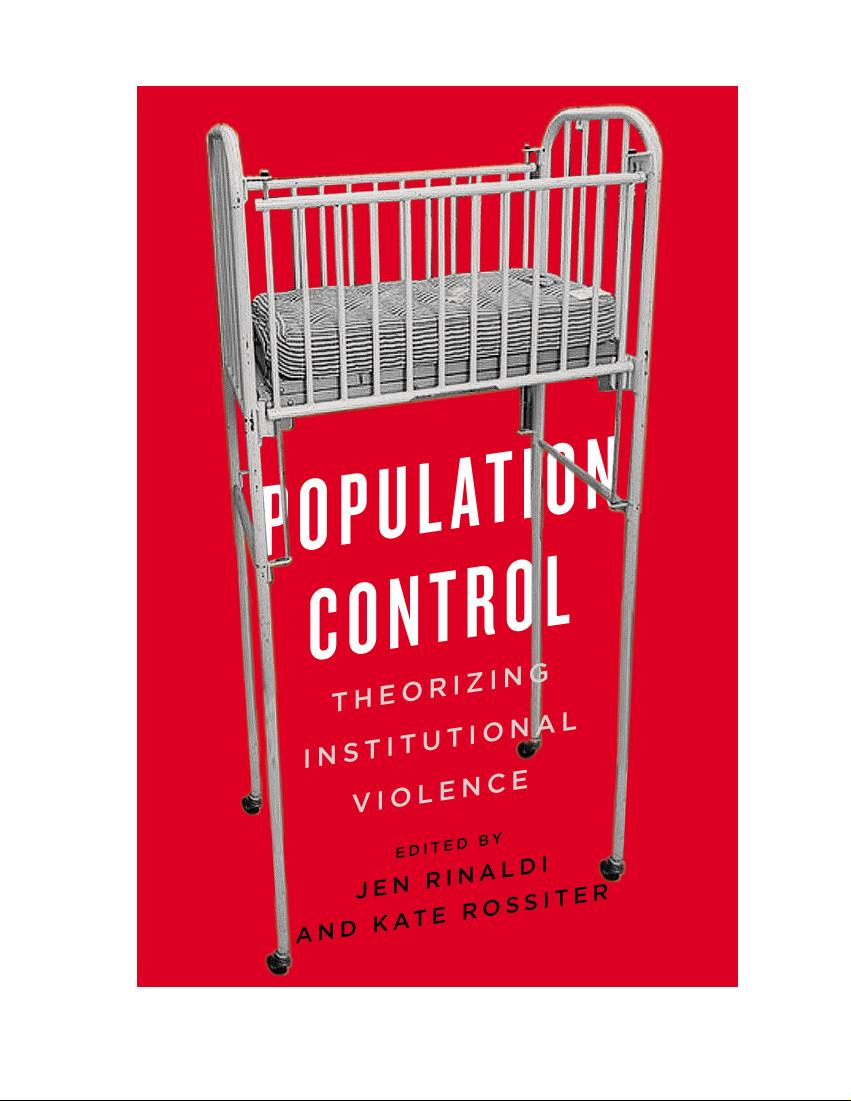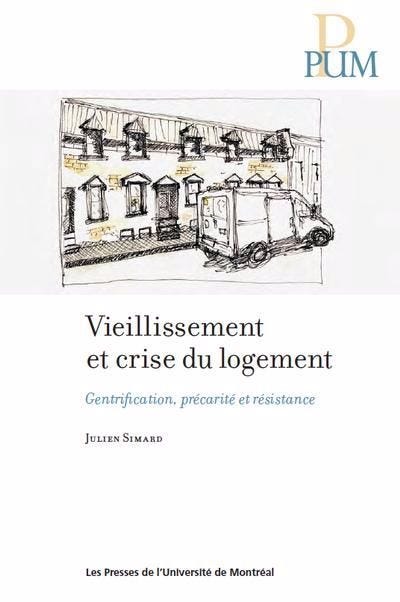Canada Prizes celebrates unwritten histories and unfolding futures
This year’s winners will be celebrated June 3 at the Congress of the Humanities and Social Sciences (Congress 2025) being held at George Brown College in Toronto.
A row of well read books Credit: Syd Wachs / Unsplash
The 2025 Canada Prizes award celebrates five authors who explored the theme of Unwritten histories, unfolding futures, and created works that enrich our understanding of community, storytelling and resistance while offering unique perspectives on life in Canada from voices that have gone unheard.
Some of those voices are included in Population Control: Theorizing Institutional Violence, by Jen Rinaldi and Kate Rossiter, an exploration of societal violence of oppressed groups of people.
Book cover for Population Control: Theorizing Institutional Violence, by Jen Rinaldi and Kate Rossiter, by Jen Rinaldi and Kate Rossiter Credit: Archambault
Rinaldi, associate professor in legal studies at Ontario Tech University, and Rossiter, associate professor in health studies at Wilfrid Laurier University, conducted years of research that included archival investigations and interviews with institutional residents and survivors of emergency shelters, asylums, prisons and residential schools.
Rinaldi and Rossiter determined that violence is baked into the DNA of how society manages oppressed groups of people. They argue the kind of violence that happens in institutions results from a way of thinking about how to manage groups that are socially loathed. Examples of abusive acts include assigning people a number rather than a name, the use of solitary confinement, forced feedings, beatings and sexual assaults.
“Social loathing starts when we stop understanding people as human beings and start seeing them as a social issue that needs to be dealt with,” said Rossiter, whose uncle had Down syndrome and spent his life in an institution.
Institutionalization is once again regaining momentum across North America with proposals to expand group home living, create migrant detention centres and repurpose asylums for those with mental health and addiction issues.
“Our hope is that this book will heighten awareness of this predictable social phenomenon and make inroads toward preventing its reoccurrence,” Rinaldi explained.
Book cover for Vieillissement et crise du logement: gentrification, précarité et résistance (Aging and the Housing Crisis: Gentrification, Precarity and Resistance) by Julien Simard Credit: Book sellers
Julien Simard, postdoctoral researcher at CREMIS and Université de Montréal, explored the role gentrification plays in displacing elderly tenants for his book Vieillissement et crise du logement: gentrification, précarité et résistance (Aging and the Housing Crisis: Gentrification, Precarity and Resistance) (Les presses de l’Université de Montréal).
Gentrification of neighbourhoods is often embraced for its economic benefits, but the hidden outcome is the displacement of elderly tenants. Simard explores the consequences of gentrification among older Canadian tenants living in Montreal, many of whom are paying below-market-value rent due to being long-term lessees.
Combining a global literature review, on-the-ground assessments and interviews with older tenants, Simard discovered that seniors – especially women – often experience harassment from their landlords who want to displace them by force.
“It’s important to see behind closed doors and grasp the violence that can be ingrained in relationships like those of landlord-tenant that aren’t visible,” Simard said.
Simard found that few seniors have the skills and experience to fight for their rights in what can be a grueling legal process.
“While public policies in Canada and Quebec promote aging in place, these policies often forget about older tenants, who are prone to eviction and displacement to the outskirts, with many ending up homeless,” he said.
Book cover for Tricky Grounds: Indigenous Women’s Experiences in Canadian University Administration, Dr. Candace Brunette-Debassige Credit: University of Regina Press
Dr. Candace Brunette-Debassige, Assistant Professor in Indigenous Relations at Laurentian University, wrote Tricky Grounds: Indigenous Women’s Experiences in Canadian University Administration (University of Regina Press), to expose the lived experiences of Indigenous women who take on leadership roles traditionally held by white men.
Following the 2015 release of the Truth and Reconciliation Commission of Canada report, many Canadian universities grappled with how to respond to calls to action in education. That led to many Indigenous people being hired for senior administrative positions.
Brunette-Debassige spent two years (2017-2019) interviewing some of the Indigenous women hired for these positions. Her work reveals the challenges these women, as well as Brunette-Debassige herself, faced during this initial period of institutional transformation that was intended to move universities towards deeper levels of Indigenous inclusion in areas like curriculum and research.
However, these women faced ongoing roadblocks that included everything from lacking authority to a dearth of budget and personnel to support the growing mandate, as well as struggling to be heard, or being dismissed as biased or too political.
“They acted as a bridge between the universities and Indigenous communities, but they were also working on a dangerous border that was almost impossible to bridge because each world stems from very different ways of working,” Brunette-Debassige said.
Book cover for Mille après mille: Célébrité et migrations dans le Nord-Est américain (Mile After Mile: Celebrity and Migrations in the American Northeast), by Pierre Lavoie Credit: Les Editions du Boreal
Pierre Lavoie, historian and professor in the Department of Humanities at the University of Quebec in Trois-Rivières, explores the aftermath of the great labour migrations between Quebec and the US in the late 19th and early 20th centuries for his book, Mille après mille: Célébrité et migrations dans le Nord-Est américain (Mile After Mile: Celebrity and Migrations in the American Northeast) (Éditions du Boréal).
Lavoie follows the paths of interwar popular artists Mary Travers (known as La Bolduc), Rudy Vallée and Jean Grimaldi who were all migrants or descendants of migrants with ties to Quebec. All three achieved fame south of the border, particularly in New England, where roughly one million French Canadians had emigrated in search of a better life.
This book guides readers through the cultural transformation that occurred in the U.S. Francophone communities where migrants developed distinct identities as well as their cultural links to Quebec.
“In a way, and even if it’s not its central aim, this book can serve as a mirror for French Canadians in Quebec today,” Lavoie said. “Like many other settler societies, we tend to talk about migration as other people’s problem when in fact French Canadians have been one of the most mobile populations in North America in the last 150 years. Knowing the history of French-Canadian mobility is a way to develop more empathy towards people who are experiencing migration now.”
Book cover for D’Arthur Buies à Gabrielle Roy: Une histoire littéraire du reportage au Québec (1870-1945) (From Arthur Buies to Gabrielle Roy, a literary history of reporting in Quebec (1870-1945)), by Charlotte Biron Credit: Les Presses de l’Universite de Montreal
Charlotte Biron, professor in literary studies at l’Université du Québec à Montréal, considers the role literary journalism played in filling the gap in the history of French Canadian literature for her book D’Arthur Buies à Gabrielle Roy: Une histoire littéraire du reportage au Québec (1870-1945) (From Arthur Buies to Gabrielle Roy, a literary history of reporting in Quebec (1870-1945)) (Les presses de l’Université de Montréal).
Biron spent years digging through newspaper archives from 1870 to 1945 and was captivated by the unique approach to literary journalism in French Canadian newspapers that existed at that time. The style is a cross between journalistic reporting and literary work that results in descriptively rich articles related to Franco communities across Canada and the Northern US by writers such as Arthur Buies, Gabrielle Roy, Jules Fournier, and Éva Senécal.
“At a time when radio was just getting started and there were few books and no television, these beautifully written newspaper pieces documented personal experiences and stories of an era gone by that transports readers back in time,” said Biron, citing railroad travels, boom towns and all things old-fashioned as popular topics of the day.
The five Canadian authors will receive $4,000 each in recognition of their inspiring, impactful and transformative work. The awards celebrate a range of voices, from first-time authors to established scholars, while championing French and English language works and amplifying a broad scope of perspectives across disciplines, in line with the Federation for the Humanities and Social Sciences’ commitment to equity, diversity, inclusion, and decolonization. The Prizes are independently juried by the Scholarly Book Awards Academic Council.
Members of the public are welcome to attend The Canada Prizes: Unwritten histories, unfolding futures awards ceremony at Congress 2025 on June 3 from 2 p.m. to 3 p.m. at George Brown College, Waterfront Campus in Toronto. To purchase a community pass for Congress ($30) which provides access to the awards ceremony as well as 100+ keynote and open Congress sessions, visit Congress 2025 | FHSS.
Congress 2025 — themed “Reframing togetherness” — serves as a platform for the launch of thousands of research papers and presentations from social sciences and humanities experts worldwide. With more than 7,000 scholars, graduate students and practitioners expected to participate, the event will challenge attendees to model togetherness by working across differences, questioning hierarchies, and bridging divides in knowledge and experience to tackle the world’s most persistent challenges.
*This article was originally published on rabble.ca.
Thanks to everyone who read today’s article. With your financial support, a little Nicoll can make a lot of change.








